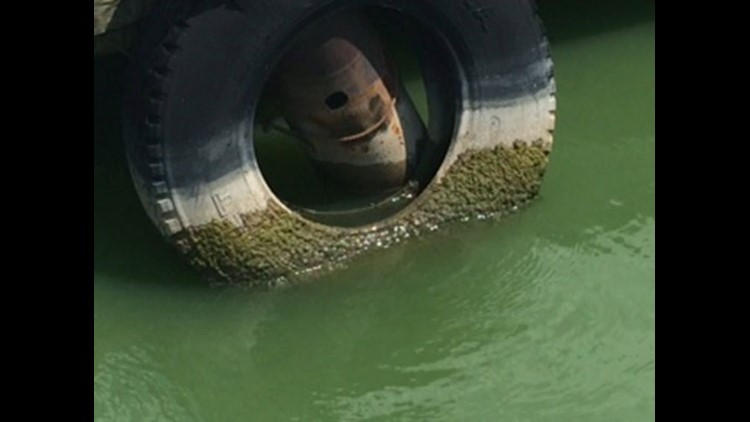
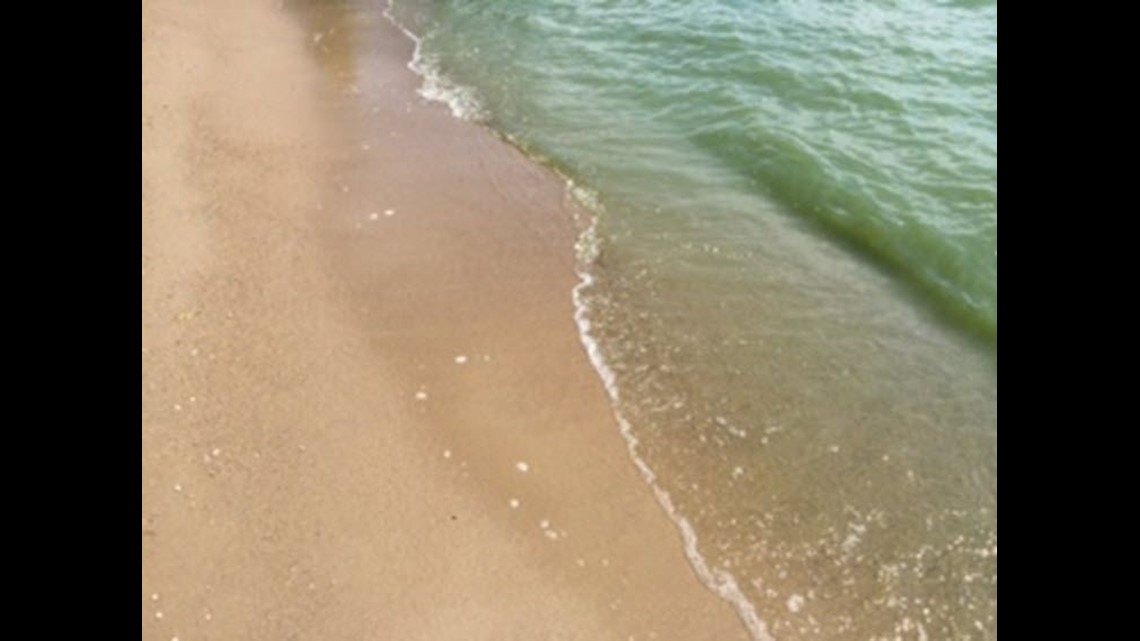

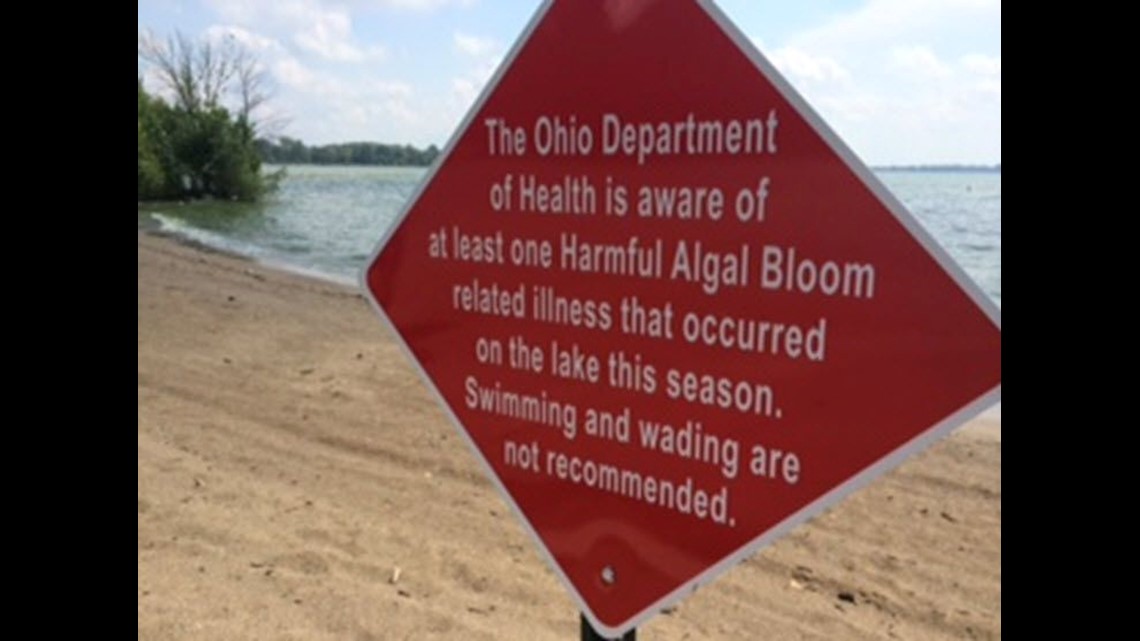

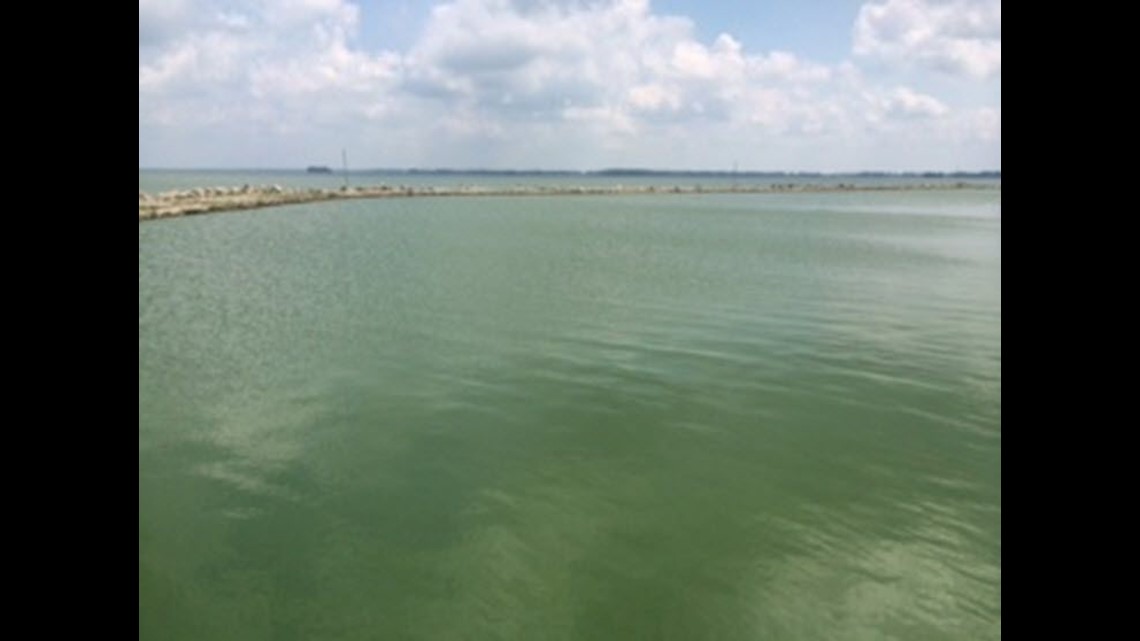

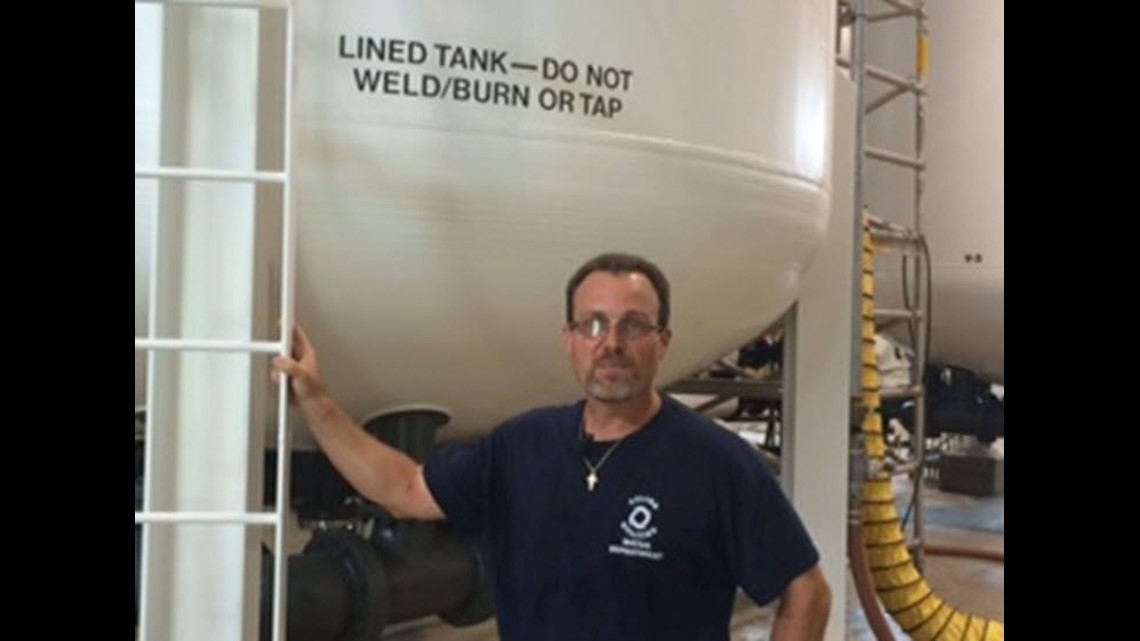
CELINA, OH (Toledo News Now) - It looks like an idyllic summer getaway.
Grand Lake St. Marys runs between St. Marys and Celina and is one of the oldest state parks in Ohio. But if you take a closer look, you'll see green water washing up on shore. That's because of blue green algae that many believe is caused by agricultural runoff.
While Toledo's "Watch" status for its water quality is based on Monday's raw lake water test that showed 0.6 parts per billion (ppb) of microcystin, raw water readings have exceeded 100 ppb this year in Grand Lake St. Marys. The lake is about 115 miles southwest of Toledo.
Results from a U.S. EPA study released in 2009 showed microcystin in the lake at 80 ppb.
The assistant superintendent for the Celina Water Treatment Plant, Todd Hone, said, "The World Health Organization recommendation was 20 parts per billion and that's when it got everybody's attention around here."
Hone said the plant added ozone in 1994 to address taste and odor complaints, but the high levels of toxic microcystin showed the dire need for a new water treatment plant, which was built in 2008. While they remove toxins at the plant, the algae is still blooming in Grand Lake St. Marys. The highest reading in raw lake water this year was 106 parts per billion.
That has left the lake with a toxic reputation.
Mick Eymer, who has lived near the lake in St. Marys since he was 16, said, "We've been eating these fish all our life out here. I mean the fish don't seem like they are bad. I don't know, it just seems like it's a bum rap, you know."
"At the time of the report coming out in 2009, we had 5 marinas on this lake. Four of the five have shut down," added Hone.
So how is this happening and what is being done to treat the toxic water?
Grand Lake St. Marys had been known as the largest man-made reservoir in the world, but it is also shallow, gets lots of sunshine, and heats up quickly in the spring. It's a perfect breeding ground for toxic algae.
At the state park's beaches, you can see that the water washing up on shore is green with toxic gunk. Green algae clings to the posts on a dock and on tires connected to the dock.
On July 30, the Ohio Department of Health issued a do not swim or wade advisory. Signs are posted at all beach areas.
"It's pretty sad. Like I said, you look at it and there is nobody on it. I mean, August. This thing should be full of vacationers," said Eymer
12,000 people in the city of Celina get their drinking water from the lake, but microcystin measured at 82 ppb in the most recent test taken on July 29.
At the highest point this year, the lake water reached 106 ppb in a test. Just 0.3 pbb in tap water would trigger a "do not drink" order in Toledo for children five and under and pregnant women.
Hone realizes it's a major challenge at their water treatment plant. When it was suggested that a reading of 106 parts ppb could be enough to cause a panic in Lake Erie communities, Hone seemed to agree.
But when asked why that doesn't happen in Celina, he said, "Well, folks around here aren't happy about it but it's just a fact of life."
It's the plant's job to convert the toxic water to safe drinking water. The current water treatment plant was built in 2008 and they key feature is 8 tanks with 40,000 pounds each of granular activated carbon. This is what absorbs the microcystin and filters it out of the water.
"Most people, when they take a tour of this plant, they're astounded by how complicated our treatment process is," said Hone. "And they feel a lot better once they see our facility, our processes and what we can do with the water"
Hone said despite the high amount of toxins in the lake, the drinking water remains safe. He said microcystin has been "non-detect" in every tap water sample taken since June 2009.
"What Toledo went through was a nightmare scenario and I hope we never get there," he added.
The city of Celina pays for the equipment and the chemicals to treat the toxic water by charging customers $7.50 on their bill.
Hone was asked for advice for Toledo water quality leaders. He said they should be fine with the Lake Erie water as long as they are always looking for algal blooms and adjust their water treatments appropriately.


